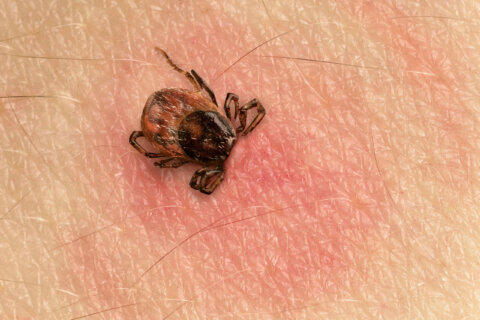The novel coronavirus that began in China has been spreading across the U.S. — on Friday evening, there were 62 U.S. patients and no deaths, while by Monday morning there were 80 cases and two deaths.
That number is likely to continue to grow, in part because the U.S. has been “way behind the rest of the world” in getting people tested, a public health expert told WTOP on Monday.
“While we were testing in the hundreds, in Korea and other countries, tens of thousands of people have been tested,” said Michael Greenberger, director of the University of Maryland’s Center for Health and Homeland Security, adding the virus “may have been circulating for weeks” before the first cases were even acknowledged.
Part of the problem, he said, was a contamination problem at the Centers for Disease Control and Prevention laboratory in Atlanta where American test kits were being prepared.
The World Health Organization distributed kits to countries in the rest of the world, who used them to test large swathes of their populations. The CDC, as well as the U.S. Food and Drug Administration, insisted on using their own tests, many of which turned out to be flawed.
Asked why they did that, Greenberger said, “This is the mystery.”
More on the coronavirus:
- Full coronavirus coverage
- Coronavirus FAQ
- Authorities announce 2nd coronavirus death in US
- Organizers: Coronavirus fears won’t derail DC’s Cherry Blossom Festival
- France’s Louvre stays shut amid staff concerns
Hospitals and other facilities “are perfectly capable of having a test,” Greenberger said, “and finally, CDC has released individual facilities to create their own tests.”
Not only has the problem at the CDC lab not been resolved, Greenberger said; “they’re not quite sure what the problem is.”
But that’s in the rear view mirror, he added. “What we need to do right away is get as many people tested as possible.”
Vice President Mike Pence, named by President Donald Trump to oversee the government’s response to the virus, said more than 15,000 virus testing kits had been released over the weekend, and that the administration is working with a commercial provider to distribute 50,000 more.
The CDC in the early days of the virus focused testing on people who had recently been to China, especially Wuhan and the area around it.
But many of the latest cases, including the two deaths in the U.S., have no connection to China: ”It’s developing on its own in the United States,” Greenberger said.
Testing was “shamefully inadequate, and we’re finally catching up,” he added.
“We don’t have the contours because of the federal government’s lapses,” Greenberger said.
Greenberger said state health departments need resources from the feds such as testing and antivirals, “When they get what they need from the federal government, they are superb. But when they don’t have the proper test kits, and they’re dependent on the federal government, they’ve been slowed down.”
After the Ebola pandemic of 2014, President Barack Obama set up an infrastructure to deal with pandemics. When Trump took office, he scrapped much of it.
“For every one of these things, we have to develop a vaccine or another antiviral. But we started from square one, rather than building on what was available,” he said.
Meanwhile, he added, the best advice for the public is the same as it has been since the outbreak began: Wash your hands and don’t touch your face.
WTOP’s Nick Iannelli and The Associated Press contributed to this report.








